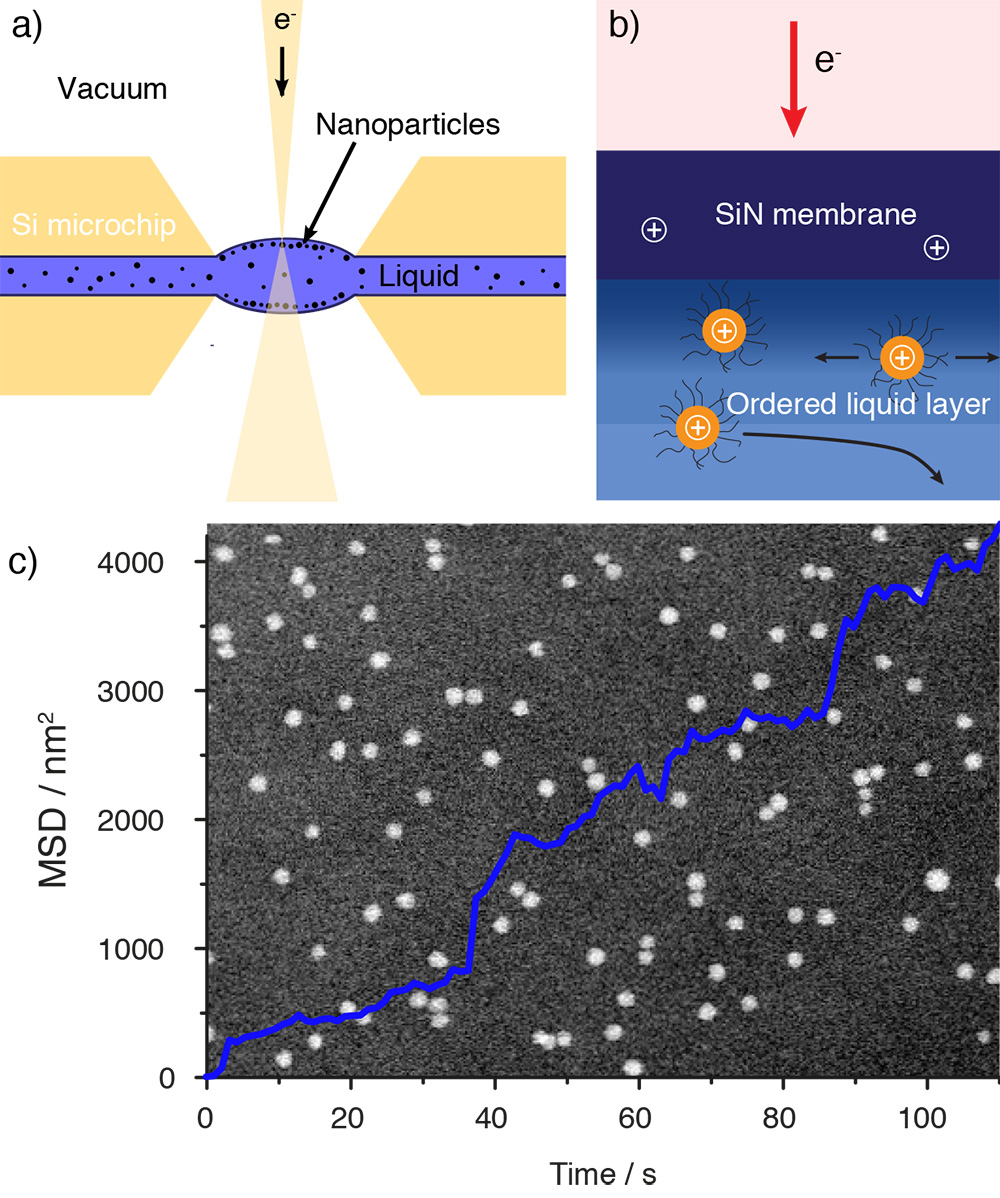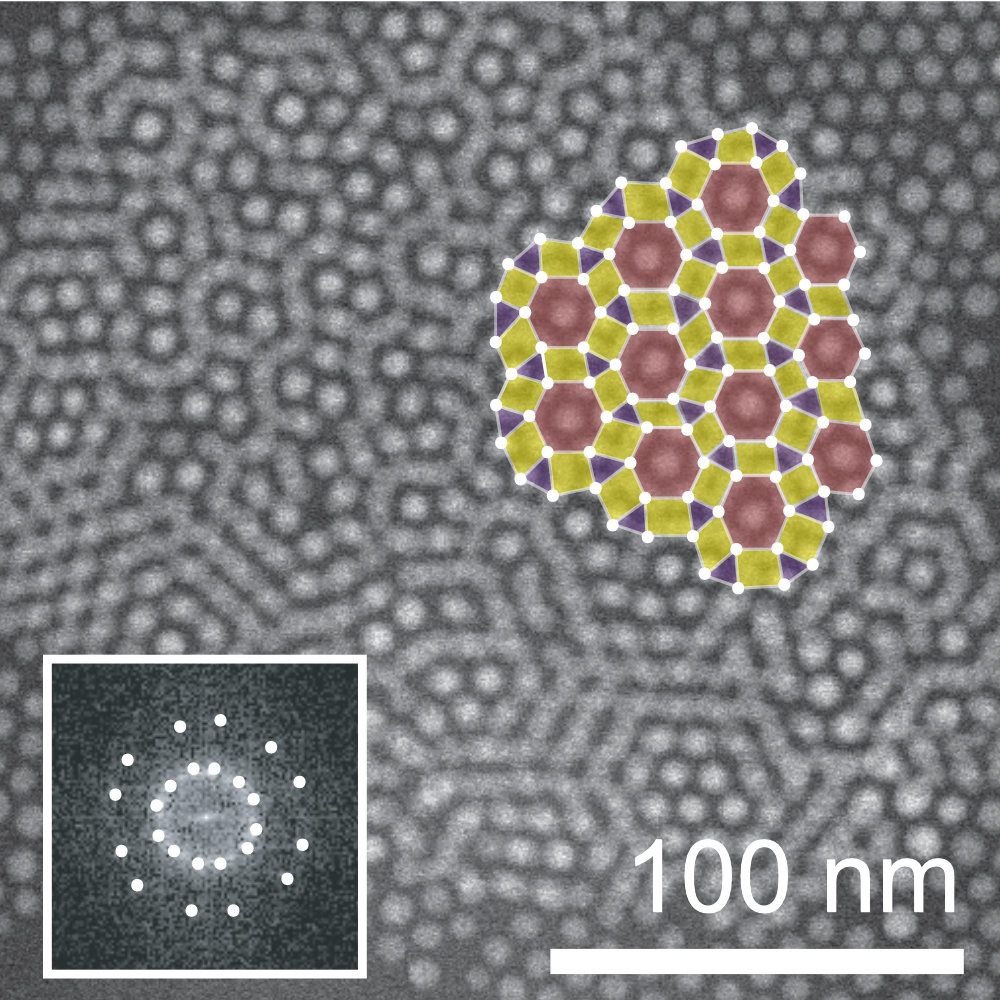Discovery of exceptionally slow motion of nanoparticles in liquid

Liquid-phase electron microscopy (LP-EM) offers unique options for studying the nanometer scale dynamic processes which occur at the solid-liquid interface. We have recently studied the electron beam-induced electrochemistry of gold nanoparticles under varied liquid conditions. We expect to gain new fundamental insights in nanoscale dynamics, and local van der Waals interactions. We discovered that nanoparticles in close proximity to a surface do not move as predicted by Brownian motion, but many orders of magnitude more slowly, this is possibly explained by the presence of an interface layer of ordered liquid with exceptionally high viscosity.
This research is performed within the DFG-funded project: “Probing nanoscale interactions at the solid-liquid interface via liquid-phase electron microscopy”.
Figure at the left: LP-EM imaging of gold nanoparticles in a thin liquid layer. (a) Schematic of the experimental setup consisting of a microfluidic chamber with electron transparent windows. (b) The first nanometers of liquid consist of an ordered liquid layer with nanoparticles. (c) Mean square displacement versus time of twenty moving nanoparticles in the image shown. From: Langmuir 31, 6956 (2015)
Nanoparticle self-assembly studied in liquid

We are studying self-assembly of superlattice films of nanoparticles at the solid liquid interface using LP-EM.
We study the self-assembly of superlattice films of nanoparticles at the solid liquid interface using LP-EM. Nanoparticle superlattice films form at the solid-liquid interface and are important for mesoscale materials, but are known to be difficult to analyze before they are completely dry. Along with the group led by Prof. Tobias Kraus at INM, we study the self-assembly of superlattice films of nanoparticles at the solid liquid interface using LP-EM, especially the early stages of the arrangement of nanoparticles at solid-liquid interfaces. The figure above shows oleylamine-stabilized gold nanoparticles (AuNPs) spontaneously forming thin layers on a silicon nitride (SiN) membrane window in non-polar liquids such as toluene. Our research shows that the first monolayer usually exhibited hexagonal symmetry, whereas the second layer showed various geometries, including a rhombitrihexagonal pattern. Our research aims to understand the weaker interactions between the nanoparticles and the surface while immersed in liquid. The results of the studies are expected to allow the fine-tuning of the properties of new materials built from these self-assembled three-dimensional superlattices.
Figure at the left: AuNPs arranged in a rhombitrihexagonal pattern imaged with LP-EM in toluene. From: Sci. Adv. 6, eaba1404 (2020)